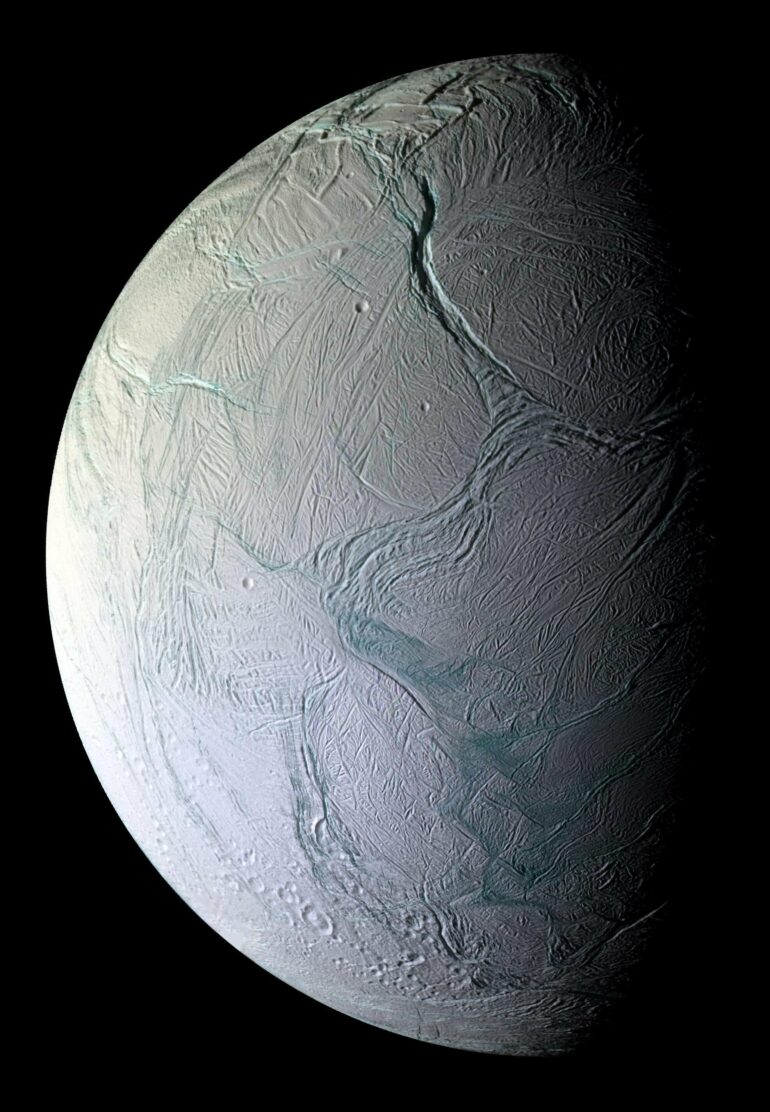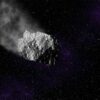Although it is relatively small, Enceladus—the sixth largest of Saturn’s 83 moons—has been considered by astronomers to be one of the more compelling bodies in our solar system.
Enceladus stands apart from other celestial bodies because of both its appearance and its behavior. It has the whitest and most reflective surface that astronomers have yet observed. And it’s known for spraying out tiny icy silica particles—so many of them that the particles are an important component of the second outermost ring around Saturn, its so-called E ring.
Enceladus is characterized as an “ocean world,” a celestial body with a substantial volume of liquid water. But unlike oceans on Earth, which are on the planet’s surface, Enceladus’ ocean is protected beneath a thick layer of ice. The ice doesn’t trap the ocean completely, though: Some materials from the watery expanse are released near Enceladus’ warmer south pole from large fractures in the ice known as “tiger stripes.”
The silica particles that Enceladus ejects begin their journey at the sea floor, far beneath the moon’s surface—and to date, scientists have not known how that happens or how long the process takes.
A new study led by UCLA scientists offers some answers. The research shows that tidal heating in Enceladus’ rocky core creates currents that transport the silica, which is likely released by deep-sea hydrothermal vents over the course of just a few months.
The research was published in Communications Earth & Environment.
Ashley Schoenfeld, a UCLA doctoral student in planetary science, led a group that analyzed data about Enceladus’ orbit, ocean and geology that had been collected by NASA’s Cassini spacecraft. The scientists constructed a theoretical model that could account for the silica’s transport across the ocean.
Enceladus’ active geology is fueled by tidal forces as it orbits Saturn—the moon is tugged and squished by gravity. That deformation creates friction in both the moon’s ice shell and its deep rocky core, The new model demonstrated that the friction heats the bottom of the ocean enough to create a current that transports the silica particles toward the surface.
“Our research shows that these flows are strong enough to pick up materials from the seafloor and bring them to the ice shell that separates the ocean from the vacuum of space,” Schoenfeld said. “The tiger-stripe fractures that cut through the ice shell into this subsurface ocean can act as direct conduits for captured materials to be flung into space. Enceladus is giving us free samples of what’s hidden deep below.”
Cassini found substantial amounts of hydrogen gas in the plumes which, together with the silica, present compelling evidence for hydrothermal activity at the ocean floor. The theoretical model devised by the UCLA-led team strengthens that hypothesis by demonstrating a plausible timeframe for the process, and a convincing mechanism that would explain why the plumes contain silica. The model also would help explain why other materials are transported to the surface, along with the silica particles.
“Our model provides further support to the idea that convective turbulence in the ocean efficiently transports vital nutrients from the seafloor to ice shell,” said second author Emily Hawkins, a UCLA alumna who is now an assistant professor of physics at Loyola Marymount University.
On Earth, similar deep-sea hydrothermal vents harbor a multitude of fascinating organisms that feast on minerals the vents release.
In the future, spacecraft could gather more data to enable scientists to further study the physical and chemical properties of Enceladus’ potential hydrothermal vent systems. To determine whether those vents could support life, scientists would need to test the plumes for chemical traces of biological activity, known as biosignatures; the new study offers some guidance that should aid the search for those biosignatures.
NASA’s plans for the next decade include missions that would fly by, orbit and land on Enceladus to gather more information.The UCLA-led team plans to develop additional modeling that could help shape plans for those missions.
More information:
Ashley M. Schoenfeld et al, Particle entrainment and rotating convection in Enceladus’ ocean, Communications Earth & Environment (2023). DOI: 10.1038/s43247-023-00674-z
Provided by
University of California, Los Angeles
Citation:
Study explains how Enceladus ejects particles from oceans beneath its surface (2023, February 23)



